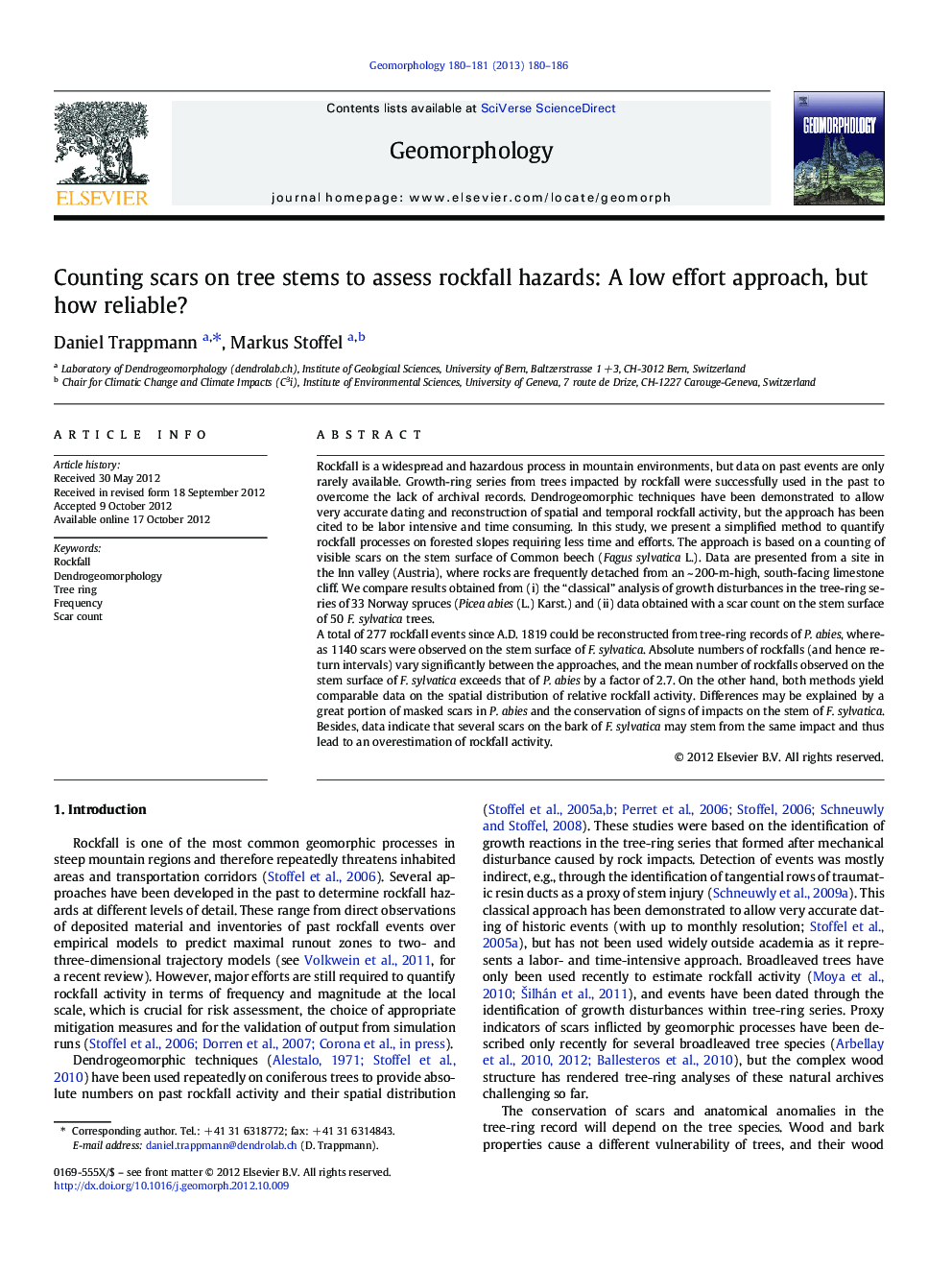| کد مقاله | کد نشریه | سال انتشار | مقاله انگلیسی | نسخه تمام متن |
|---|---|---|---|---|
| 4685017 | 1635468 | 2013 | 7 صفحه PDF | دانلود رایگان |
Rockfall is a widespread and hazardous process in mountain environments, but data on past events are only rarely available. Growth-ring series from trees impacted by rockfall were successfully used in the past to overcome the lack of archival records. Dendrogeomorphic techniques have been demonstrated to allow very accurate dating and reconstruction of spatial and temporal rockfall activity, but the approach has been cited to be labor intensive and time consuming. In this study, we present a simplified method to quantify rockfall processes on forested slopes requiring less time and efforts. The approach is based on a counting of visible scars on the stem surface of Common beech (Fagus sylvatica L.). Data are presented from a site in the Inn valley (Austria), where rocks are frequently detached from an ~ 200-m-high, south-facing limestone cliff. We compare results obtained from (i) the “classical” analysis of growth disturbances in the tree-ring series of 33 Norway spruces (Picea abies (L.) Karst.) and (ii) data obtained with a scar count on the stem surface of 50 F. sylvatica trees.A total of 277 rockfall events since A.D. 1819 could be reconstructed from tree-ring records of P. abies, whereas 1140 scars were observed on the stem surface of F. sylvatica. Absolute numbers of rockfalls (and hence return intervals) vary significantly between the approaches, and the mean number of rockfalls observed on the stem surface of F. sylvatica exceeds that of P. abies by a factor of 2.7. On the other hand, both methods yield comparable data on the spatial distribution of relative rockfall activity. Differences may be explained by a great portion of masked scars in P. abies and the conservation of signs of impacts on the stem of F. sylvatica. Besides, data indicate that several scars on the bark of F. sylvatica may stem from the same impact and thus lead to an overestimation of rockfall activity.
► Rockfall activity – as impacts on trees – was reconstructed with two different species.
► Absolute numbers of rockfalls vary significantly between the approaches.
► Counting of visible scars (Fagus) yields more data than dendrogeomorphology (Picea).
► Both approaches provide reliable data on the spatial pattern of rockfall activity.
Journal: Geomorphology - Volumes 180–181, 1 January 2013, Pages 180–186
